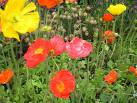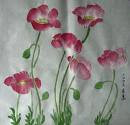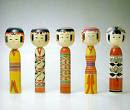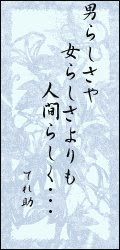::::::::::::::::::::::::::::::::::::::::::::::::::::::::::::::::::::::::::::::::::::::::::::::::::::
Ships, boats (fune)
***** Location: Japan, worldwide
***** Season: Various, see below
***** Category: Humanity
*****************************
Explanation
The word SHIP just like that (fune 船)is not a kigo in Japan.
But since there are many fishing activities along the coast of Japan, there are some kigo connected with it.
Rowboats and yachts are enjoyed in summer.
For more details about each kigo, check the Alphabetical Index of the . World Kigo Database .
. Fishing in all seasons
:::::::::::::::::::::::::::::::::::::::::::::::::::::::::::::::::::::::::::::::::::::::::::::::::::::
. . . . . SPRING
ship for catching sawara, sawarabune 鰆船(さわらぶね)
spanish mackerel fishing boat
. asaribune 浅蜊舟(あさりぶね)boat to catch littlenec clams
shijimibune 蜆舟(しじみぶね)for corbicula clams
. sayoribune 鱵舟(さよりぶね)boat for catching snipe
kigo for late spring
booto reesu ボートレース (ぼーとれーす ) boat race
..... kyoosoo 競漕(きょうそう)
kyoosookai 競漕会(きょうそうかい)boat race meeting
regatta レガッタ Regatta
ohanami reesu お花見レース(おはなみれーす)
race during the cherry blossom viewing season
. boat for catching spanish mackerel
sawarabune 鰆船(さわらぶね)
:::::::::::::::::::::::::::::::::::::::::::::::::::::::::::::::::::::::::::::::::::::::::::::::::::::
. . . . . SUMMER

cruising boat, enjoying boat life, funa asobi
船遊 (ふなあそび)
excursion boat, yuusen 遊船(ゆうせん)
..... asobi bune 遊び船(あそびぶね)
..... yuusan bune 遊山船(ゆさんぶね)
This refers mostly to the wooden boats of the Edo period.
booto ボート boat, rowboat
kashibooto 貸ボート(かしぼーと) boat for rent (rowboat)
. . . CLICK here for Photos !
Ruderboot
skaaru スカール scull Scullboat
..... skaru スカル
Skullboot
..........................................................................

yotto ヨット sailboat, dinghy, yacht
kaisootei 快走艇(かいそうてい)yacht
yotto reesu ヨットレース yacht race
. . . CLICK here for Photos !
港出てヨット淋しくなりにゆく
minato dete yotto samishiku narini yuku
out from the harbor
a yacht departs
to become lonely
Tr. Fay Aoyagi
Gotoo Hinao 後藤比奈夫 Goto Hinao
..........................................................................

fish preserve in a ship, funa ikesu
船生洲(ふないけす)
..... ikesu bune 生簀船(いけすぶね) , 船の生け簀
meals on a ship, funaryoori 船料理 (ふなりょうり)
WASHOKU
Food served on board (funaryoori)
. suzumibune 納涼舟(すずみぶね)
boat to enjoy a cool evening breeze
. ikanagobune いかなご舟(いかなごぶね)boat for fishing sand lace
. sababune 鯖舟(さばぶね)boat for fishing mackerels
:::::::::::::::::::::::::::::::::::::::::::::::::::::::::::::::::::::::::::::::::::::::::::::::::::::
. makomo - wild rice .

floater to harvest wild KOMO rice, komo kari bune
菰刈船(こもかりぶね)
boat for harvesting wild rice, makomo bune 真菰舟(まこもぶね)
Zizania latifolia, Z. cauducifolia.
vegetable wild rice, fewflower wildrice
water rice, water oats : Zizania aquatica in North America
The plant grows in water and has thick stems. It has been eaten in China and then came to Japan.
KOMO 薦 means a straw mat and seat cushions, woven from this plant.
and more
humanity kigo for late summer
makomo karu 真菰刈る (まこもかる)harvesting makomo rice
makomo kari 真菰刈(まこもかり)makomo rice harvest
水深く利(とき)鎌鳴らす真菰刈
mizu fukaku toki kama narasu makomo kari
deep in the water
the sound of sickles cutting
water rice / water oats
Yosa Buson 蕪村 (1716-1783)
. . . . .
plant kigo for late spring
wakakomo 若菰 (わかこも) young komo
kojun 菰筍(こじゅん)
komozuno 菰角(こもづの)- 莢白(こもづの)
kosai 菰菜(こさい)
makomo no me 真菰の芽 (まこものめ) buds of makomo
makomo ou 真菰生う(まこもおう)
katsumi no me かつみの芽(かつみのめ)
mebaru katsumi 芽張るかつみ(めばるかつみ)
. . . . .
observance kigo for early autumn
. makomo uri 真菰売(まこもうり)vendor of makomo .
(straw to make horse decorations for O-Bon)
observance kigo for mid-autumn
. makomo no uma 真菰の馬 (まこものうま) horse from Makomo .
Tanabata uma 七夕馬 horse for Tanabata
. . . . .
plant kigo for mid-autumn
makomo no hana 真菰の花 (まこものはな) flower of wild rice
..... komo no hana 菰の花(こものはな)
..... hana makomo 花真菰(はなまこも)
. . . CLICK here for Photos !
plant kigo for all winter
kare makomo 枯真菰 (かれまこも) withered wild rice
..... makomo karu 真菰枯る(まこもかる)wild rice withered
.................................................................................
. makomo uma まこも馬 wild rice straw horse .
folk toy from Ibaraki
:::::::::::::::::::::::::::::::::::::::::::::::::::::::::::::::::::::::::::::::::::::::::::::::::::::
boat for harvesting MO water weeds, mo kari bune
藻刈船(もかりぶね) . 藻刈り船
and more
humanity kigo for late summer
mokari, mo kari 藻刈 (もかり) harvesting waterweeds
mo karu 藻刈る(もかる)waterweeds harvest 刈藻(かりも)
mokarizao 藻刈棹(もかりざお)pole for harvesting waterweeds
mokarigama 藻刈鎌(もかりがま)sickle for harvesting waterweeds
karimo kuzu 刈藻屑(かりもくず)
. WKD : Seaweed (kaisoo 海草)
.................................................................................

ship for fishing katsuo bonito,
katsuo bune 鰹船(かつおぶね)

fencing ships, kakoi bune 囲い船 (かこいぶね)
..... fune kakou 船囲う(ふねかこう)
..... fune kakoi 船囲い(ふねかこい)
Some ships fence of a peace of sea for fishing
ship for evacuating cholera patients in the Edo period
korera sen コレラ船(これらせん)
Funamushi 船虫 (ふなむし, 舟虫) sea slater
.................................................................................
obeservance kigo for mid-summer
. Dragon Boat Race (Peron) ペーロン
keito 競渡 (けいと) peron boat race
..... keito sen 競渡船(けいとせん)Dragon Boat
.................................................................................
obeservance kigo for late summer
. funamatsuri 船祭(ふなまつり)boat festival .
kawatogyo 川渡御(かわとぎょ)"crossing the river"
dondokobune どんどこ舟(どんどこぶね)Dondoko boat
kenchabune 献茶舟(けんちゃぶね) boat for ritual tea ceremony
at shrine Tenmangu in Osaka 大阪 天満宮
:::::::::::::::::::::::::::::::::::::::::::::::::::::::::::::::::::::::::::::::::::::::::::::::::::::
. . . . . AUTUMN
iwashibune 鰯船(いわしぶね)boat for fishing sardines
. hazebune 鯊舟(はぜぶね)boat for fishing goby
observance kigo for early autumn
. segakibune 施餓鬼舟(せがきぶね)Segaki boat .
for the Segaki ceremony
Offering food and drink to the hungry ghosts, Segaki 施餓鬼
. shooryoobune (shoryobune) 精霊船
ships for the blessed souls of the O-Bon festival.
observance kigo for mid-autumn
for the Tanabata star festival
. tsuma mukaebune 妻迎舟 "boat to welcome the wife" .
..... tsumakoshibune 妻越し舟(つまこしぶね)
tsuma okuribune 妻送り舟(つまおくりぶね)
tsuma yobufune 妻呼ぶ舟(つまよぶふね)
shichiju no fune 七種の舟(しちしゅのふね)
..... nanakusa no fune ななくさ の 舟
boat with seven pieces of luggage
:::::::::::::::::::::::::::::::::::::::::::::::::::::::::::::::::::::::::::::::::::::::::::::::::::::
. . . . . WINTER
kani koosen 蟹工船 ship for processing King Crab
magurobune 鮪船(まぐろぶね) boat for fishing for tuna
. namakobune 海鼠舟(なまこぶね)boat for catching sea cucumber
tarabune, ship to fish for tara 鱈船(たらぶね)
.................................................................................
observance kigo for mid-winter
. morotabune no shinji 諸手船神事 (もろたぶねのしんじ)
Morotabune Boat Race Ceremony
..... morotabune 諸手船(もろたぶね)
iyaho no matsuri 八百穂祭(いやほのまつり)
Ritual of 800 rice ears
mikuji ubai 御籤奪(みくじうばい)
fighting for fortune telling slips
:::::::::::::::::::::::::::::::::::::::::::::::::::::::::::::::::::::::::::::::::::::::::::::::::::::
. . . . . NEW YEAR
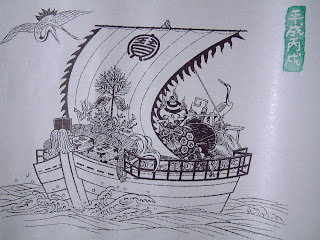
. Ship of Good Luck, "treasure ship"
takarabune 宝船 (たからぶね) .
treasure boat
takarabune shiku 宝船敷く(たからぶねしく)
seller of treasure ships, takarabune uri 宝船売(たからぶねうり)
sleeping beside the treasure ship, takarabune shiku ne
宝船敷き寝(たからぶねしきね)
© More in the WIKIPEDIA !

first use of the boat, funa okoshi 船起 (ふなおこし)
..... 、kishuu 起舟(きしゅう)、kishuu iwai 起舟祝(きしゅういわい)
festival of the ship owners, funakata matsuri 船方祭(ふなかたまつり)
Boats are decorated with beautiful flags for the first outing.

Festival of the Ship's God, funadama sekku
船霊節句(ふなだませっく)
first using of the boat, funanori zome 船乗初(ふなのりぞめ)
..... funa hajime 船初(ふなはじめ)
first leaving of the port, funade hajime 船出始(ふなではじめ)
first rowing, kogi zome漕初(こぎぞめ)
first loading of the ship 初荷船(はつにぶね)
:::::::::::::::::::::::::::::::::::::::::::::::::::::::::::::::::::::::::::::::::::::::::::::::::::::
TOPICS for haiku
Atakemaru 安宅丸 Cruize Ship of the Shogun
- quote -
In the Edo period, many feudal lords in the Kyushu region are said to have sailed the Seto Inland Sea with 30 to 40 ships to and from the area around the current Yodo River in Osaka for Sankin Kotai (alternate attendance). Ships used by these lords on these occasions are called "Gozabune." These Gozabune ships with dynamic and gorgeous interior and exterior decorations were used as a private luxury liner by feudal lords.

One of our ships was renamed "Atakemaru" as a replication of a Gozabune boat in the Heisei era to offer luxurious cruising with a traditional feel to customers mainly from Tokyo (Kanto region) in the Tokyo Port.
- source : gozabune.jp -
. Welcome to Edo 江戸 ! .
.......................................................................

ebune 家船 ship used as a home
They were popular in the Inland Sea, fishing for swordfish tachiuo and others.
There is a small facility, about 3 tatami wide, where the couple can sleep. Kitchen is provided on board too. Bath is used in a harbour town.
They can save fuel when staying near a good fishing ground for some days. The children have to stay with grandma on land.
. taraibune たらい舟 "tub boat" barrel boat .
. utasebune 打瀬船 fishing for shrimp
. watashibune わたし舟 / 渡し舟 / 渉舟 ferry boat .
*****************************
Worldwide use
Alaska
first cruise ship
put boat in water after winter storage
SPRING KIGO in Alaska
last cruise ship
AUTUMN KIGO in Alaska
:::::::::::::::::::::::::::::::::::::::::::::::::::::::::::::::::::::::::::::::::::::::::::::::::::::
North America
Skipjacks are the official Maryland State Boat.
oysters in my bed
boats above me
watch out, the dredge!
Amora Johnson, US
WKD : skipjack -- Chesapeake Bay Saijiki : Winter
:::::::::::::::::::::::::::::::::::::::::::::::::::::::::::::::::::::::::::::::::::::::::::::::::::::
"Parade of Lights"
kigo for winter
Each Christmas there is a "Parade of Lights" in our town. I think it is commons around the US, where boats are decorated in lights for the holidays and they have a parade on the water.
parade of lights
I avoid the traffic
again this year
Laura Becker Sherman
Florida

The San Diego Bay Parade of Lights
is a time-honored Christmas holiday tradition brought to San Diego by the boating community.
source : www.sdparadeoflights.org
*****************************
Things found on the way
Haiku about the Sea
海の見える俳句
*****************************
HAIKU
牡蠣船にもちこむわかればなしかな
kakibune ni mochikomu wakarebanashi kana
talk of separation -
brought all the way to the
oyster ship
(Tr. Gabi Greve)
WKD: 久保田万太郎 Kubota Mantaroo
:::::::::::::::::::::::::::::::::::::::::::::::::::::::::::::::::::::::::::::::::::::::::::::::::::::
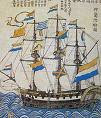
帆の多きオランダ船や 雲の峰
ho no ooki orandasen ya kumo no mine
A Dutch ship
With many sails:
The billowing clouds.
WKD : Shiki, trans. Blyth
:::::::::::::::::::::::::::::::::::::::::::::::::::::::::::::::::::::::::::::::::::::::::::::::::::::
白き巨船きたれり春も遠からず
shiroki kyosen kitareri haru mo tookarazu
A great white ship
Is entering the harbour;
Spring cannot be far off.
大野林火 Rinka, trans. Blyth
Blyth notes that "harbour" is not in the haiku, but since Rinka lived in Yokohama, Blyth concludes this is about the harbour there. Kyosen 巨船.
巨き船出でゆき蜃気楼となる
ooki fune ide yuki shinkiroo to naru
Great ocean liner
setting out on a voyage
becomes a mirage.
山口誓子(やまぐちせいし) Seishi,
trans. Takashi Kodaira and Alfred H. Marks
Note: "Season Word: 'shinkiroo', 'mirage'. Spring, celestial phenomena."
Compiled by Larry Bole, Kigo Hotline
:::::::::::::::::::::::::::::::::::::::::::::::::::::::::::::::::::::::::::::::::::::::::::::::::::::
Queen Elizabeth 2

the QE2
humming so steadily --
chilly day in port
Isabelle Prondzynski / Kigo Hotline
Read more about it !
*****************************
Related words
***** . Fishing in all seasons
Japanese ships and boats named MARU 丸
The Legend of the Deity
. Azumi no Isora Maru 阿曇磯良丸 Isoramaru .
:::::::::::::::::::::::::::::::::::::::::::::::::::::::::::::::::::::::::::::::::::::::::::::::::::::
[ . BACK to DARUMA MUSEUM TOP . ]
[ . BACK to WORLDKIGO . TOP . ]
:::::::::::::::::::::::::::::::::::::::::::::::::::::::::::::::::::::::::::::::::::::::::::::::::::::

